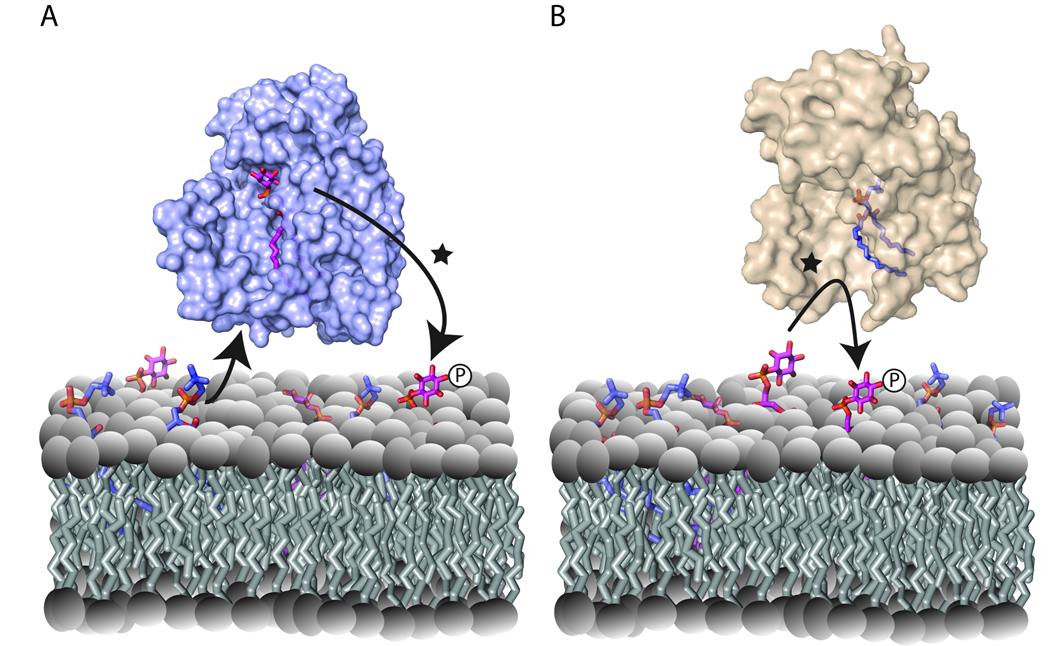Figure 5.
Heterotypic exchange and PtdIns presentation. Two possibilities for how heterotypic exchange reactions support PtdIns presentation are shown. (A) Sec14p-PtdIns represents the primed intermediate and PtdCho entry displaces bound PtdIns from the open Sec14p conformer in a vectorial head-first manner. The PtdIns 4-OH kinase (not shown) executes the modification on the leaving PtdIns substrate that exits through a portal (depicted by a star) distinct from that occupied by the invading PtdCho. (B) Sec14p-PtdCho represents the primed intermediate and the sequestered PtdCho molecule frustrates entry of the invading PtdIns into the hydrophobic pocket. The frustrated PtdIns is a superior substrate for PtdIns 4-OH kinase (not shown), which executes modification of the invading PtdIns substrate at its of entry portal (depicted by a star). Both models satisfy the requirement that nascent PtdIns-4-phosphate not collapse back into the hydrophobic pocket as that circumstance results in a dead-end Sec14p-PIP complex that cannot be further resolved by phospholipid exchange [26].

